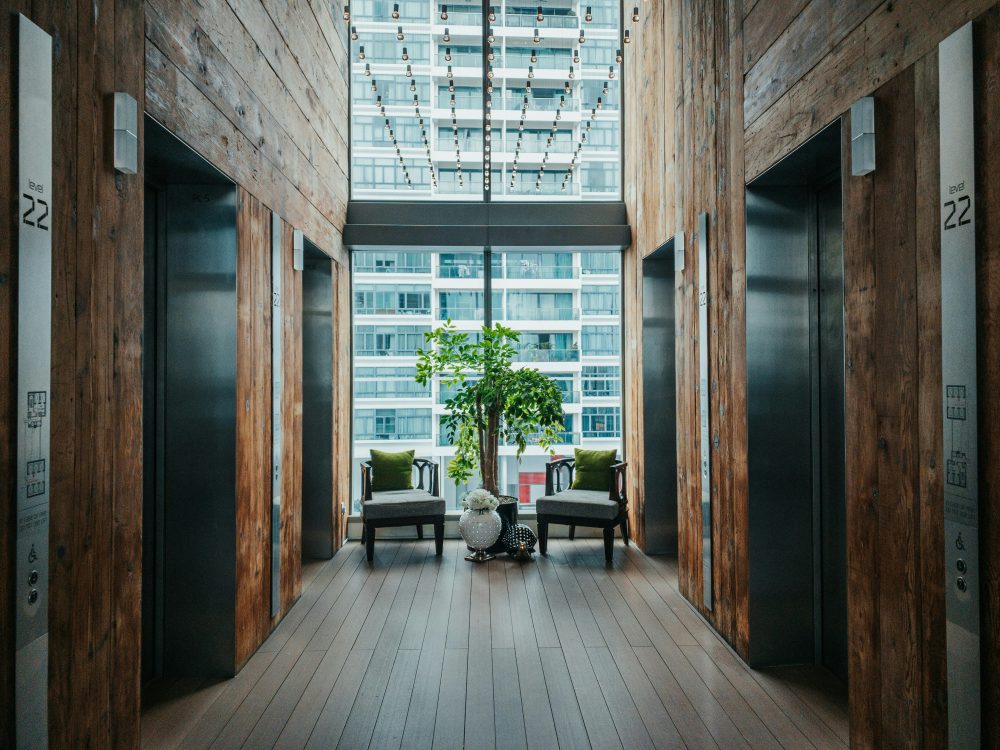When deciding between installing a passenger lift or a home lift, it’s crucial to evaluate the specific circumstances, needs, preferences, and budget constraints of the future users. Both types of lifts serve unique purposes and fall under different regulatory directives in Europe. A passenger lift is governed by the Lifts Directive 89/16/EC, whereas a house lift is regulated by the European Machinery Directive 2006/42/EC.
Understanding the Regulatory Differences
The primary distinction between a house lift and a passenger lift is their legal classification. Since 2010, the Machinery Directive has specified that a lift with a speed of less than 0.15 meters per second is categorised as a machine lift or house lift. This classification allows for different safety and structural requirements compared to traditional passenger lifts.
Legal Designation and Safety Standards
- House Lift (Machine Lift):
- Directive: European Machinery Directive 2006/42/EC.
- Speed Limit: Less than 0.15 meters per second.
- Safety Features: Can have a very shallow or no well due to no free space requirement.
- Installation: Requires minimal architectural modifications, making it cost-effective and easier to install.
- Passenger Lift:
- Directive: Lifts Directive 89/16/EC (also considering Lifts Directive 2014/33/EU for newer standards).
- Speed Limit: Typically, higher than 0.15 meters per second.
- Safety Features: Requires a lift pit and shaft head unless the lift speed is restricted to 1.0 meters per second.
- Installation: More complex and requires significant architectural modifications, resulting in higher costs.
Key Differences Between House Lifts and Passenger Lifts
Speed and Efficiency
- House Lifts: Operate at a slower speed, which is suitable for private residences where rapid vertical transport is not a necessity.
- Passenger Lifts: Designed for faster transport, ideal for commercial buildings, apartment complexes, and public spaces where quick and efficient movement is crucial.
Structural Requirements and Installation
- House Lifts:
- Can be installed with minimal construction work.
- Lower installation costs due to fewer structural modifications.
- Ideal for existing homes or buildings with space constraints.
- Passenger Lifts:
- Require significant structural changes, including a deeper pit and shaft.
- Higher installation costs due to extensive construction work.
- Suitable for new constructions or major renovations where space and structural integrity are not limited.
Safety and Enclosure
House Lifts:
- Must be fully enclosed if operational control is on the platform.
- Typically designed like a cabin lift with walls, ceiling, and cabin door to ensure safety.
Passenger Lifts:
- Must adhere to strict safety regulations, including mandatory pit and shaft head for higher-speed lifts.
- Designed to transport multiple passengers quickly and safely, adhering to rigorous safety standards.
Choosing the Right Lift for Your Needs
When deciding between a house lift and a passenger lift, consider the following factors:
- Usage Frequency: How often will the lift be used? House lifts are ideal for occasional use in private residences, whereas passenger lifts are designed for frequent use in commercial settings.
- Budget Constraints: House lifts are generally more cost-effective due to simpler installation. Passenger lifts, while more expensive, offer higher speed and efficiency.
- Space Availability: House lifts require less space and minimal structural changes, making them suitable for existing buildings with limited space. Passenger lifts need more room for installation and are better suited for new builds or extensive renovations.
- Safety Requirements: Ensure that the lift type you choose meets all necessary safety standards and regulations for your region.
Detailed Comparison of House Lifts and Passenger Lifts
- Cost and Installation Complexity
The cost of installing a lift can be a significant factor in your decision. House lifts generally have lower installation costs because they require fewer structural changes. The shallow well or absence of a well means that major architectural modifications are unnecessary, saving both time and money. This simplicity makes house lifts a practical option for retrofitting into existing homes or buildings with limited space.
On the other hand, passenger lifts are more complex and require extensive modifications to the building structure. The need for a deep lift pit and a substantial shaft increases both the construction time and the costs involved. These lifts are typically installed in new buildings or as part of major renovations where space and design considerations allow for the necessary modifications.
- Speed and Performance
The speed of the lift is another important consideration. House lifts, with their slower operational speeds, are well-suited for private homes where there is no rush to move between floors. These lifts provide a comfortable and smooth ride, ensuring safety and convenience for users.
Passenger lifts, however, are designed for faster and more frequent use. They can transport multiple passengers quickly, making them ideal for high-traffic areas such as office buildings, shopping centres, and apartment complexes. The higher speed of passenger lifts enhances efficiency and reduces waiting times, which is crucial in busy environments.
- Safety Features and Compliance
Safety is paramount when choosing a lift. House lifts must be fully enclosed if there is operational control on the platform. This design includes walls, a ceiling, and a cabin door, ensuring that users are protected during their journey. The European Machinery Directive 2006/42/EC mandates these safety features, making house lifts a secure choice for private use.
Passenger lifts are subject to even stricter safety regulations under the Lifts Directive 89/16/EC and the newer 2014/33/EU standards. These regulations require a lift pit and shaft head, providing additional safety measures. The stringent safety requirements ensure that passenger lifts are equipped to handle high volumes of users securely.
Advantages of House Lifts
- Cost-Effective: Lower installation and maintenance costs make house lifts a budget-friendly option for homeowners.
- Minimal Structural Changes: Ideal for retrofitting in existing buildings, house lifts require fewer architectural modifications.
- Customised Design: House lifts can be tailored to fit the aesthetic and functional needs of a private residence.
Advantages of Passenger Lifts
- Higher Speed: Designed for rapid transport, passenger lifts are perfect for commercial and public buildings.
- Increased Capacity: Capable of carrying multiple passengers, these lifts are suitable for high-traffic areas.
- Enhanced Safety: Strict compliance with safety regulations ensures a secure environment for all users.
Choosing between a passenger lift and a house lift depends on various factors, including usage, budget, and space availability. House lifts offer a cost-effective and simpler installation solution for private residences, while passenger lifts provide faster and more efficient transport for commercial and public buildings. By understanding the differences in regulations, installation requirements, and safety features, you can select the lift that best suits your specific needs and circumstances.





